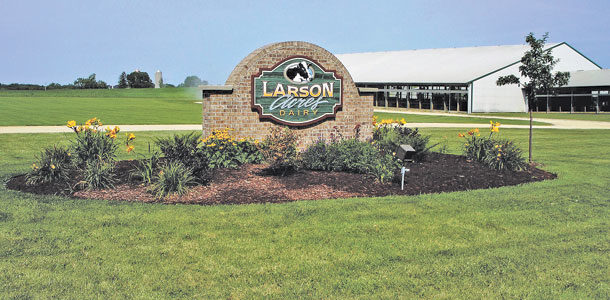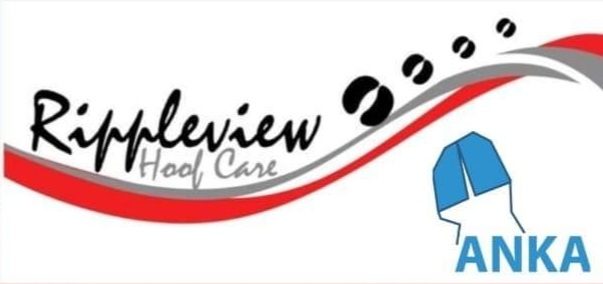A 15-year-old building may seem new to some, but for Mike Larson, general manager at Larson Acres, their barn built in 1998 was in need of some updates. “We’ve learned a lot about cow comfort in 15 years,” Larson says.
In addition to making changes based on new knowledge, aspects of the barn were worn and needed to be replaced.
By late 2014, Larson knew it was time to renovate. “We needed to renovate. It wasn’t about wanting to renovate,” Larson laughs. “We had stalls that were rusted and walkways where pitted stones were showing.”
Humble beginnings
Larson Acres is located in Evansville, Wisconsin, about a half-hour outside of Madison. Mike Larson manages the farm along with five family members. In all, the farm supports 11 family members and 55 employees.
Like most dairy farms, Larson Acres has humble beginnings going back four generations. More than 90 years ago, the family began farming near the current location, and in 1957 Don and Virginia Larson purchased the home farm.
Just 20 years ago, the Larsons milked 150 cows. In 1998, the farm underwent its first major expansion, growing to 500 cows. By 2000, Larson Acres expanded to 1,200 cows, and in 2010, the herd doubled and a cross-ventilated barn and second parlor were added, bringing the operation to its current size with 2,400 milking cows.
The farm grows and harvests all the necessary feed for their cows on 5,500 acres of owned and rented land. Custom manure-hauling services are often used, but other than that, the Larson team sustains all aspects of the farm.
Agriculture outreach is part of the culture at Larson Acres, and they regularly host tours, support community activities and engage in dairy promotion.
Extreme makeover
In planning for upgrades to the dairy’s oldest barn, Larson focused on improving cow comfort, according to today’s standards, while emphasizing efficiencies. The dairy’s newer cross-ventilated barn provided a few concepts that were applied to the remodeling project, which focused on six elements: stall size, sidewalls, bird netting, headlocks, manure scraping and aisles.
New stalls were installed that are wider and offer more lunge room. Removing curtains and moving the barn sidewalls out 18 inches helped create the necessary lunge space for the new stalls. During this process, bird netting was added to the sidewalls. “We tried a number of bird products over the years, and netting works much better for us,” Larson says.
Prior to the remodeling, cows in this barn had to be sorted to pens for breeding, ultrasounding or other herd health check-ups. Now, added headlocks in the new stall area save time for staff and veterinarians and reduce movement and stress for cows.
Manure-scraping equipment and method were also addressed in the remodeling. “Our manure transfer system needed to be revamped,” Larson says. “We had manure augers that were put in as a retrofit, and they were becoming a maintenance nightmare.”

This challenge was met with a few solutions. First, by lowering the crossover alley, manure is scraped directly into a manure pit. Instead of using skid steers to scrape manure, Larson Acres now uses a utility tractor with a scraper with hydraulic wings. “Now we can scrape from curb to curb, which has increased efficiency,” Larson says.
Walkways, aisles and alleys were replaced and re-grooved for better footing and traction.
If you had to do it all over
Remodeling projects often take on a life of their own, and after the dust settles, it’s common to reflect on lessons learned. For Larson, he wouldn’t do anything differently and is pleased with the results. “We chose to reroute cow traffic during the remodel, and I am glad we did,” he says.
By moving cattle to create empty pens, construction didn’t have to work around cows. “We talked to a bunch of people, and they all warned against doing work in between milkings,” Larson says. “By keeping areas empty, work was done right because we were not rushed.” Cows were also rerouted to and from the parlor using some unconventional but effective methods (Photo 1).

Farms looking to improve efficiency and replace worn equipment should do their research. “We didn’t work with anyone in particular for the remodel; we did a lot of our own research and talked to fellow farmers,” Larson says.
Construction has been complete for several months, and the cows are happy with their new surroundings. Their favorite feature seems to be the new stalls. “Since the remodel, we are pleased with the stall usage,” Larson says.
Cows enjoy their extra space, and when not eating or moving to and from the parlor, cows are lying down, relaxing and making milk.
While Larson hasn’t noticed any major changes in milk production or reproduction, he’s confident in the decision to remodel. PD
To learn more about Larson Acres, visit their website. View the complete photo gallery of the remodel on their Facebook page.
Maria F. McGinnis is a freelance writer based in Sun Prairie, Wisconsin.
PHOTOS
PHOTO 1: Larson Acres in Evansville, Wisconsin, is home to 2,400 milking cows. Barns from the farm’s first major expansion in 1998 were remodeled in late 2014.
PHOTO 2: As part of the stall remodel, bird netting was added to keep birds out of the barns. For Larson, this works the best of any bird solution they have tried.
PHOTO 3: New concrete was re-grooved for better traction and comfort.
PHOTO 4:A utility tractor fitted with a scraper with hydraulic wings scrapes manure in the alleys from curb to curb. Manure is scraped directly into a manure pit.
PHOTO 5:Cows took an alternate route to the parlor during the remodel. During this process, trailers and other equipment helped form a makeshift walkway.Photos courtesy Sandy Larson.







